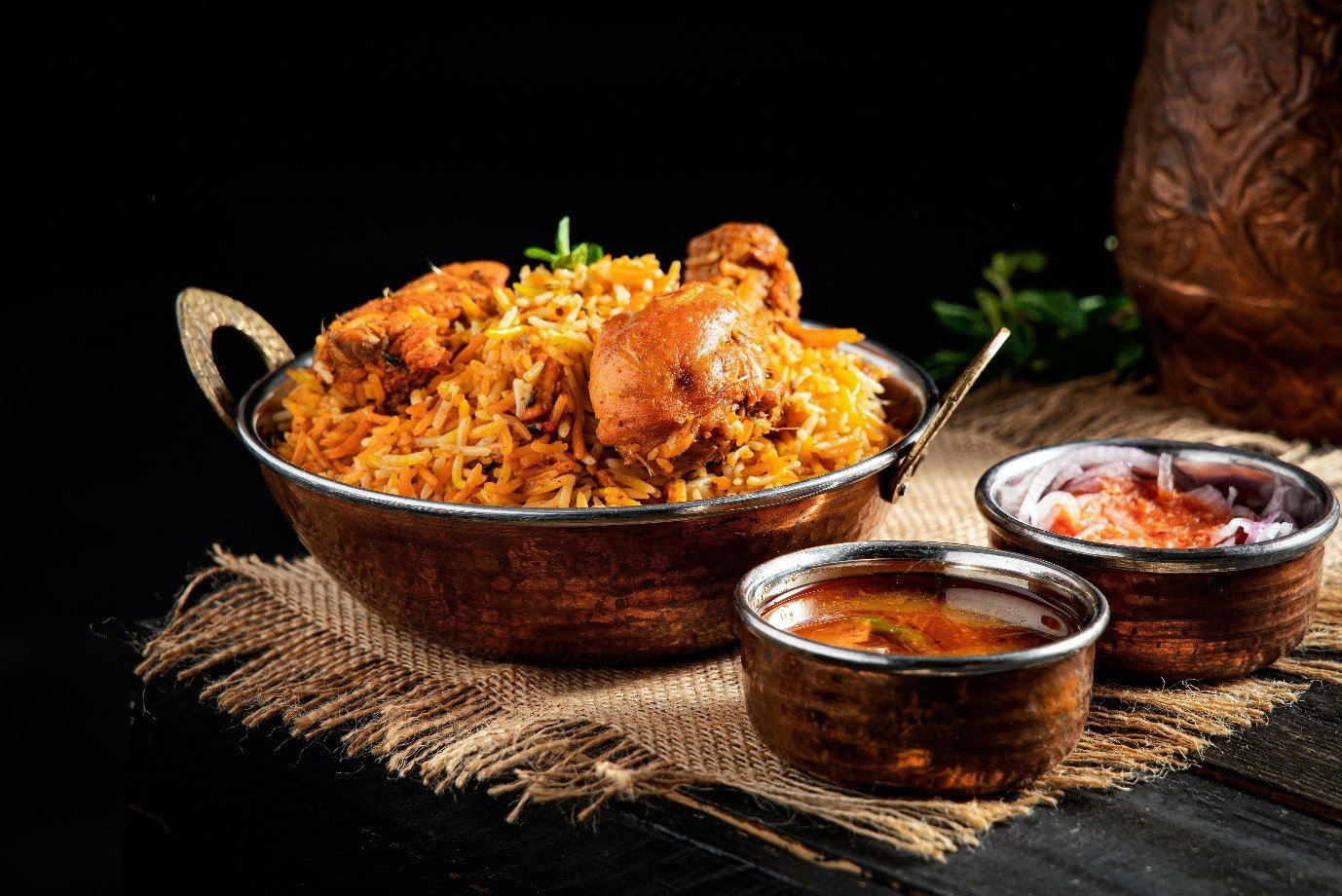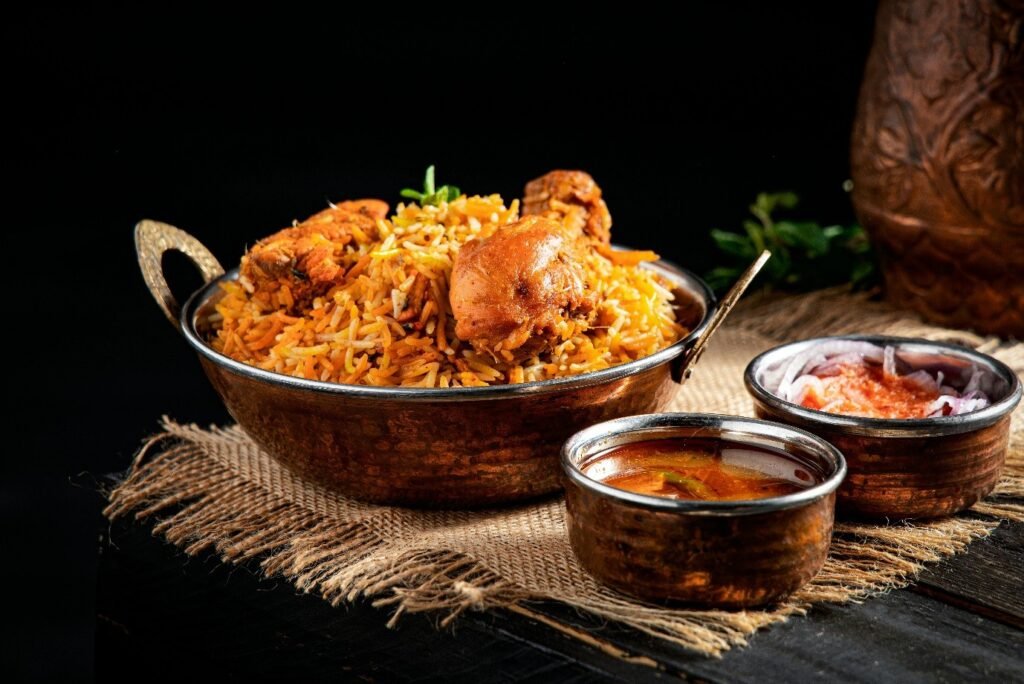
Rangamani’s Recipes Every Week

How to Make Authentic-Style Biryani ?
A Step-by-Step Guide to Prepare This Iconic Dish
Biryani is more than just a rice dish—it’s a celebration of aroma, flavor, and tradition. Originating in South Asia, biryani is beloved across India, Pakistan, and beyond, with regional variations that add their own unique touch. Making authentic-style biryani at home might seem intimidating, but with patience and the right steps, you can master this iconic dish.
This guide focuses on Hyderabadi-style chicken biryani, known for its rich spices and layered cooking method.
📝 Ingredients (Serves 4–5)
For the chicken marinade:
800g (1.75 lb.) chicken, bone-in pieces preferred
- 1 cup yogurt
- 2 tablespoons ginger-garlic paste
- 1 teaspoon red chili powder
- ½ teaspoon turmeric
- 1 teaspoon garam masala
- Salt to taste
- Juice of 1 lemon
- A handful of chopped mint and cilantro
- For the rice:
- 2 cups basmati rice (long-grain preferred)
- 4–5 cups water
- 2–3 green cardamoms
- 4 cloves
- 1 bay leaf
- Salt (about 1 tbsp)
- For layering and cooking:
- 1 large onion, thinly sliced
- 4 tablespoons ghee or oil
- A pinch of saffron soaked in ¼ cup warm milk
- Extra mint and cilantro for garnish
Optional: Fried cashews and raisins
🍲 Step-by-Step Instructions
Step 1: Marinate the Chicken (Minimum 2 hours or overnight)
- In a large bowl, combine all the marinade ingredients and coat the chicken thoroughly. Cover and refrigerate for at least 2 hours (overnight gives the best flavor).
Step 2: Prepare the Rice
- Rinse the basmati rice until the water runs clear, then soak for 30 minutes.
- In a pot, bring water to boil. Add whole spices and salt.
- Add soaked rice and cook until 70% done (it should still have a bite).
- Drain and set aside.
Step 3: Fry the Onions
- Heat oil or ghee in a pan.
- Fry sliced onions until golden brown and crispy. Set aside half for layering.
Step 4: Assemble the Biryani (Dum Method)
- In a heavy-bottomed pot or Dutch oven:
- Spread the marinated chicken evenly at the bottom.
- Layer the partially cooked rice over the chicken.
- Sprinkle fried onions, mint, cilantro, and saffron milk over the rice.
- Optionally, add a drizzle of ghee for extra richness.
Step 5: Seal and Cook
- Seal the pot: You can use a tight-fitting lid or cover with foil and place a lid over it.
- Cook on medium heat for 10 minutes, then reduce to low heat for 25–30 minutes (this is the “dum” process where steam cooks everything together).
- Let it rest for 10 minutes before opening.
🍽️ Serving Suggestions
Gently fluff the biryani before serving to mix the layers.
Serve with cooling raita (yogurt sauce), salad, and boiled eggs if desired. Biryani is best enjoyed fresh, but it often tastes even better the next day as flavors deepen.
👨🍳 Tips for Authentic Flavor
Use high-quality basmati rice for the best texture and aroma.
Don’t skip the saffron milk—it adds both color and a subtle fragrance.
Layering and low heat are key—resist the urge to stir once assembled.
✨ Final Thoughts
Making biryani from scratch is an act of culinary devotion—but one that’s richly rewarded. Whether for a special occasion or a weekend treat, authentic-style biryani brings a depth of flavor and satisfaction that’s hard to match. With each bite, you taste history, culture, and the warmth of shared tradition.
Biryani truly sounds like a masterpiece of culinary art! How fascinating that it’s not just a dish but a celebration of culture and flavors. I’ve always wanted to try making Hyderabadi biryani, but I’m curious—what’s the most challenging part of the process? The spices or the layering technique? Personally, I think the patience required is the real test, but the reward must be worth it. Have you tried experimenting with other regional variations of biryani? Also, what’s your favorite biryani garnish—crispy fried onions, fresh coriander, or something else? I’d love to hear your thoughts and maybe even swap tips on making the perfect biryani!
Biryani is indeed a dish that brings people together with its rich flavors and cultural significance. I’ve always admired how each region adds its own twist, making it a versatile yet deeply traditional meal. The Hyderabadi style, with its intricate layering and aromatic spices, seems like a true labor of love. I wonder, though, how do you balance the spices to ensure they don’t overpower the dish? Also, is there a specific type of basmati rice you’d recommend for the best results? I’ve heard that the quality of saffron can make a huge difference—do you agree? Lastly, do you think biryani tastes better the next day, or is it just a myth? I’d love to hear your take on this!
Biryani is truly a dish that embodies the essence of South Asian cuisine. The way it combines spices, rice, and meat is nothing short of magical. I’ve always been fascinated by the Hyderabadi style, with its intricate layering and rich flavors. Do you think the key to a perfect biryani lies in the quality of the spices or the technique of cooking? Personally, I believe the slow cooking process is what makes it so special. Have you ever tried adding a twist to the traditional recipe, like using different meats or spices? I’m curious, what’s your go-to method for ensuring the rice is perfectly cooked and not mushy? Let’s exchange some tips and tricks to elevate our biryani game!
Biryani is truly a dish that embodies the essence of South Asian cuisine. The way it combines spices, rice, and meat is nothing short of magical. I’ve always been fascinated by the Hyderabadi style, with its intricate layering and rich flavors. Do you think the key to a perfect biryani lies in the quality of the spices or the technique of cooking? I’ve heard that the saffron milk adds a unique touch, but I wonder if there’s a substitute for saffron that works just as well. Also, how do you ensure that the rice doesn’t get mushy while cooking? I’d love to hear your tips and tricks for making the perfect biryani. What’s your favorite part of the process—the aroma, the layering, or the final taste? Let’s discuss and maybe even share some recipes!